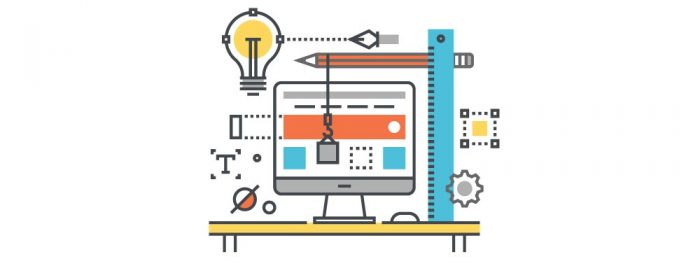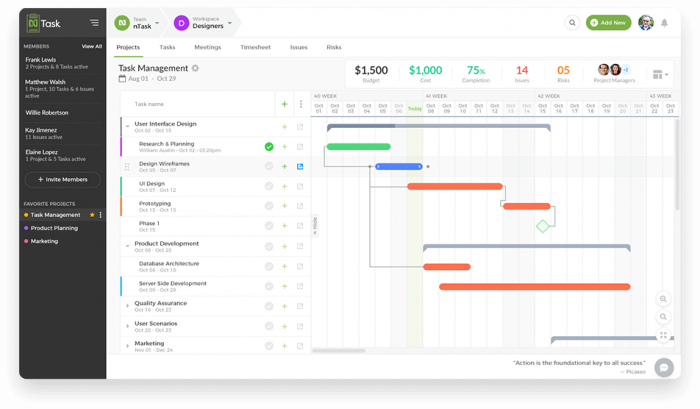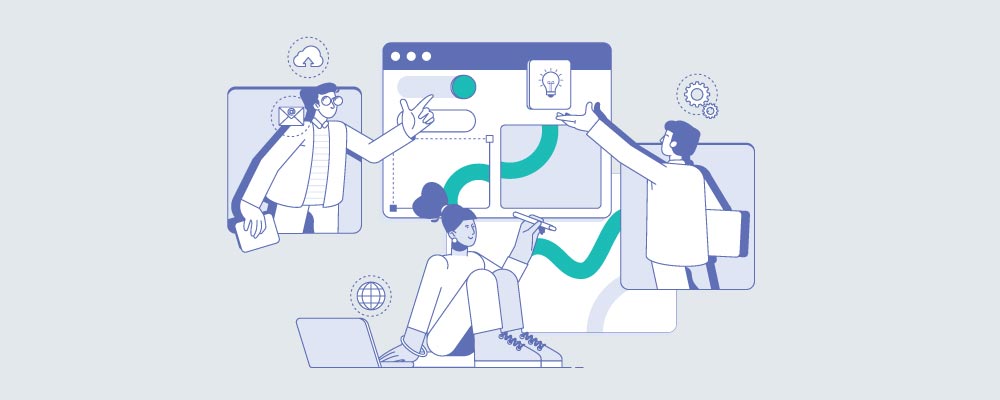We see beautiful websites every single day on our phones and laptops. Ever wondered how they got made?
If you are a web designer, you know that most of the clients that you have worked with are oblivious to your efforts and think that this high-functioning website that you created for them just came out of thin air. They don’t know about the blood, sweat, and tears that went into making it.
This ignorance on the client’s part is due to the fact that most of have them have never seen a web design process before.
And when it’s someone’s first time, you need to be extra careful and straightforward, so that there is no stress, confusion, and ultimately unhappy customers.
This is why implementing a well-defined and well-thought-out web design workflow is going to help guide your clients through every single stage of the project development process so that they can accurately know what to expect and when.
Let’s now take a look at what a web design workflow is.
What is a Web Design Workflow?

Basically, a web design workflow is an accurate collection of different tasks and processes that cover the entire development process of creating a website.
It doesn’t just consist of the actual design process, instead, it consists of everything from the thinking phase or planning phase to the post-launch processes.
The main goal of a web design workflow is to give you an eagle eye’s view of every single task and process that takes place in the website development process from start to finish.
It also helps to highlight all of the dependencies regarding the individual and team tasks, so that the required tasks are completed first to ensure a smooth trajectory of the development process.
Let’s now take a look at some other benefits of web design workflows and find out how they improve the design process.
Benefits of Web Design Workflow
Here is a list of benefits of web design workflows that we are going to talk about in this article.
- Increased Productivity
- Improved Focus
- Improved Planning
- Improved Consistency
- Improved Client Experience
Let’s take a look at these benefits of web design workflows in detail and find out how they can be beneficial for our projects.
1. Increased Productivity
The web design workflow helps to increase the productivity levels of your team. Things always run silky smooth when everyone related to the project knows about the work that they have to perform, and when they should do it, which increases productivity.
2. Improved Focus
A web design workflow is perfect for keeping the development team on track so that they can meet all of the deadlines which are expected of them.
3. Improved Planning

A workflow helps the designers to map out all of the timeframes for the tasks and processes that they have to perform as part of the design process and also provides you with a broad visual overview of the processes in question.
All of this information helps to create an accurate project timeline for the client and all of the team members associated with the project. This also improves communication, collaboration, and decision-making throughout the life cycle of the project development process.
4. Improved Consistency
Web design workflows help in building a tight structure for all your web design projects, which in turn helps to increase consistency among the development team members and with every single client.
5. Improved Client Experience
When clients know exactly what is being done by the development team about their projects, they are bound to come back to your company from time to time. Also, they will stop giving you ideas and insights on how to do your job and back off.
Important Information about Building a Web Design Workflow
Here is some important information that you have to keep in mind while building a web design workflow for your project.
- The website’s target audience
- The design elements of the website that you need to create according to the needs and requirements of your project
- When the launch date will be for your project in question
- The client’s timeline and budget
- All of the resources that you have inside your resource pool
- The content you need to create
How to Build a Web Design Workflow?
Here is a practical guide on how to create an excellent web design workflow for your project. The steps of this process are:
- Managing Expectations
- Defining Goals and Target Audience
- Planning the Website Structure
- Choosing a CMS
- Create Mock-ups and Visual Elements
- Content Creation
- Reviewing and Approval
- Testing
- Launching and Maintenance
Let’s take a look at all of these steps in detail and find out how we can build the perfect web design workflow for our projects.
1. Managing Expectations
The first step in creating a web design workflow is to make sure that every single stakeholder associated with the project is on the same page. That means that the team members and the clients have all of the knowledge required for their respective goals.
Also, a great web design workflow helps all of the parties involved in the development process to be able to easily monitor every little detail related to the project.
2. Defining Goals and Target Audience
The goals that you will define for your project are going to drive the web design development process. That means that the direction and the milestones that you are going to set for your project by monitoring the target audience are going to be followed by your designers to get work done.
3. Planning the Website Structure
The third step is to plan the entire website structure and you do that by creating a sitemap that gives you a visual representation of the website that you are going to have one day, and by drawing up wireframes, that help you outline the exact structure of each and every page of your website.
4. Choosing a CMS
Most of the time in website building projects, the clients select a CMS without consulting with their designers.
This is a mistake and the designers have to audit the CMS themselves and make sure that the CMS that they choose as a final selection, is a robust one that can handle the data we put into it and have enough flexibility for any future changes.
5. Create Mock-ups and Visual Elements
This is the step where you get to actual work and create many visually appealing mock-ups for your website design. These mock-ups can include the overall web page design as well as all of the print assets, branding assets, and social media graphics.
6. Content Creation
Once the design is mapped out and the structure of the website is in place, you need to fill all of it up with content. This can include all of the data and information related to your project. Basically, in this step, everything comes together to make a complete website.
7. Reviewing and Approval
In this step, you need to get the website that you created, reviewed, by sending out a survey or some other reviewing technique and get it approved as soon as possible.
8. Testing
In this step, you need to make sure that the website is tried and tested by quality assurance engineers, in order to make sure that the website is top-notch and there are no risks and scope creeps associated with it to drown it in the future.
9. Launching and Maintenance
In this step, the website is finally launched for the public and is monitored by the developers and designers for any and every issue that might occur. Sequential maintenance is done but any new website needs constant coverage, and that’s exactly what they do in this step.
Conclusion
This was our guide on how to create an excellent web design workflow for your projects in 2024. If you think that we missed something important to mention, feel free to write to us and we will check it out ASAP.
More Resources:

